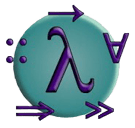Yet Another Haskell Tutorial/Language advanced/Solutions
< Yet Another Haskell Tutorial < Language advancedPartial Application
Function func3 cannot be converted into point-free style. The
others look something like:
func1 x = map (*x) func2 f g = filter f . map g func4 = map (+2) . filter (`elem` [1..10]) . (5:) func5 = flip foldr 0 . flip . curry
You might have been tempted to try to write func2 as filter f
. map, trying to eta-reduce off the g. In this case, this isn't
possible. This is because the function composition operator (.)
has type (b -> c) -> (a -> b) -> (a -> c). In this
case, we're trying to use map as the second argument. But
map takes two arguments, while (.) expects a function which
takes only one.
The Final Word on Lists
We can start out with a recursive definition:
and [] = True and (x:xs) = x && and xs
From here, we can clearly rewrite this as:
and = foldr (&&) True
We can write this recursively as:
concatMap f [] = [] concatMap f (x:xs) = f x ++ concatMap f xs
This hints that we can write this as:
concatMap f = foldr (\a b -> f a ++ b) []
Now, we can do point elimination to get:
foldr (\a b -> f a ++ b) [] ==> foldr (\a b -> (++) (f a) b) [] ==> foldr (\a -> (++) (f a)) [] ==> foldr (\a -> ((++) . f) a) [] ==> foldr ((++) . f) []
This article is issued from Wikibooks. The text is licensed under Creative Commons - Attribution - Sharealike. Additional terms may apply for the media files.
